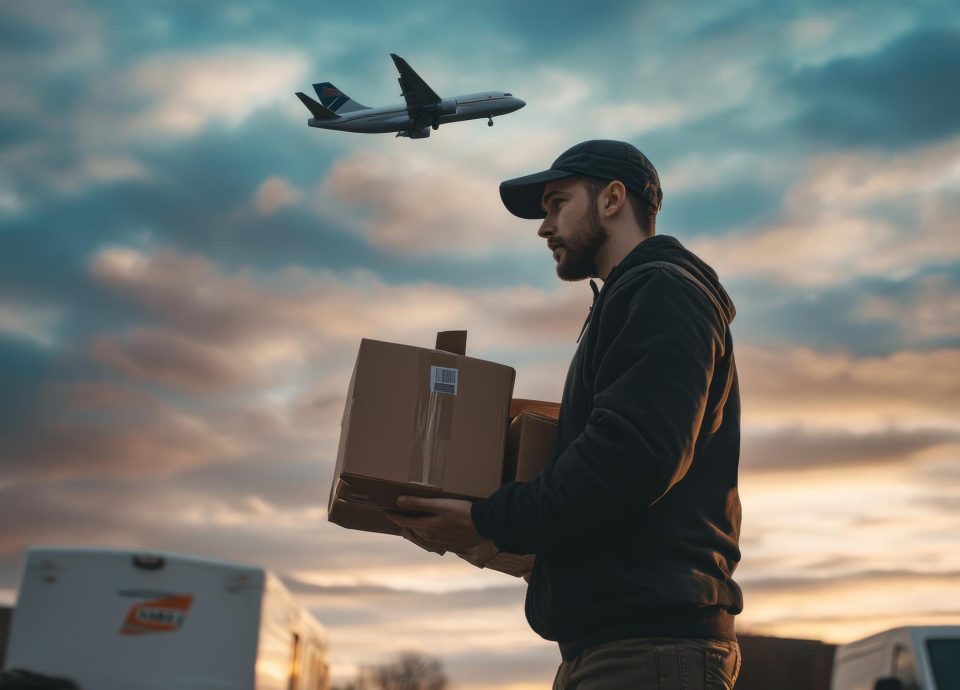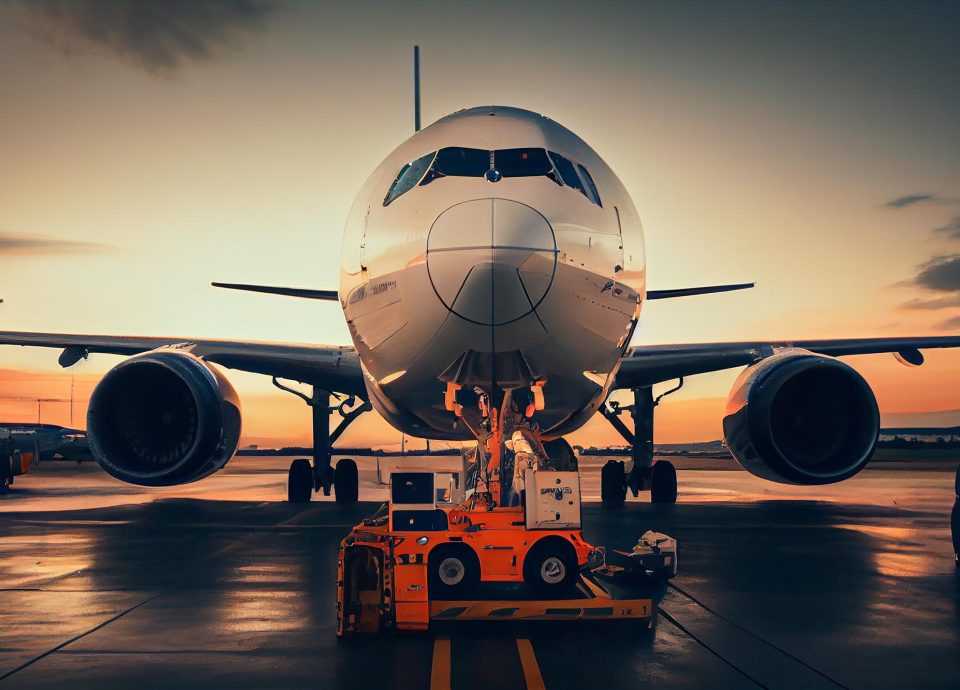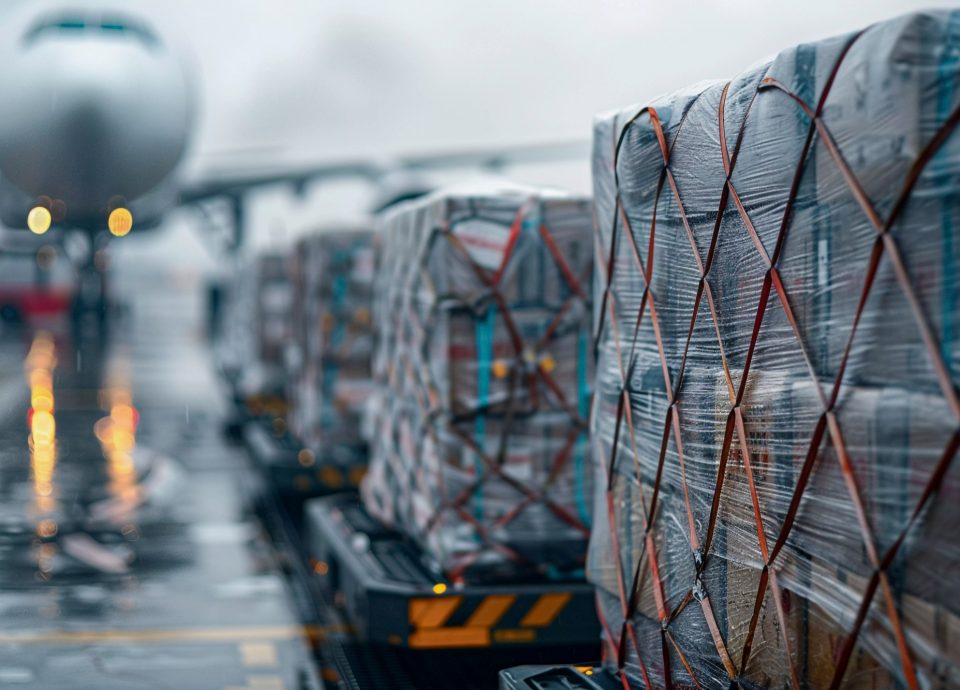In today’s fast-paced global economy, air freight transportation plays a critical role in helping businesses meet tight delivery schedules and maintain agile supply chains. Whether you’re shipping sensitive pharmaceuticals, electronics, or automotive components, understanding how air freight transportation works ensures smoother operations and fewer costly mistakes.
At Sprinter Emergency Transport Inc., we specialize in high-priority logistics and offer clients expert guidance and hands-on service throughout the entire air freight journey. In this comprehensive guide, we’ll walk you through the complete air freight transportation process—from initial planning and documentation to customs clearance and final delivery.
Understanding Air Freight Transportation
Air freight transportation refers to the movement of goods via aircraft. This method is known for its speed, security, and global reach, making it ideal for time-sensitive or high-value cargo. Airlines either use dedicated cargo planes or the belly compartments of passenger planes to transport freight across domestic and international routes.
Let’s explore what goes into every shipment from start to finish.
The Step-by-Step Process of Air Freight Transportation
Understanding each phase of air freight transportation allows shippers and logistics professionals to plan efficiently and prevent delays.
Step 1 – Shipment Planning and Consultation
Before anything moves, you must determine if air freight transportation is the right mode for your cargo.
Key Questions to Consider:
- Is the shipment urgent?
- Is the cargo lightweight or high-value?
- Does it need temperature control or special handling?
Sprinter Emergency Transport Inc. offers one-on-one consultations to help evaluate the best transportation method and routing options based on your cargo’s size, weight, and destination.
Step 2 – Booking and Scheduling
Once air freight transportation is chosen, space must be booked with an airline.
Booking Involves:
- Choosing a carrier with the right route and schedule
- Determining cargo specifications and service level (standard vs. express)
- Confirming freight class and volume
Working with a logistics provider like Sprinter Emergency Transport Inc. ensures faster access to booked space, especially during peak seasons or for last-minute needs.
Step 3 – Preparing Cargo for Transport
Proper packaging is essential in air freight transportation. Cargo must meet airline standards for safety and compatibility.
Packaging Guidelines:
- Use durable, lightweight materials
- Secure items inside boxes to avoid shifting during flight
- Label packages with clear handling instructions and shipment details
- Use specialized containers if shipping perishables, fragile, or dangerous goods
Our team can advise on International Air Transport Association (IATA) guidelines to ensure compliance from the outset.
Step 4 – Documentation and Compliance
Air freight transportation requires multiple forms of documentation to ensure customs clearance and legal compliance.
Typical Air Freight Documents:
- Air Waybill (AWB)
- Commercial invoice
- Packing list
- Export license (if required)
- Certificate of origin
- Dangerous goods declaration (if applicable)
Any missing or incorrect documentation can lead to delays or penalties. Sprinter Emergency Transport Inc. handles all document preparation on your behalf.
Step 5 – Cargo Pickup and Consolidation
Once documents are ready and packaging is complete, your freight is picked up from the warehouse or supplier location.
Consolidation:
In some cases, especially for smaller shipments, cargo is consolidated with others to save on space and cost. This step is coordinated at an air freight terminal or cargo facility.
Step 6 – Security Screening and Export Customs Clearance
Before boarding an aircraft, all air freight transportation must go through airport security and customs export procedures.
This Includes:
- X-ray or physical screening
- Verifying documentation against the cargo
- Customs checks for restricted or controlled goods
Airports with secure cargo zones expedite this process, especially for pre-approved shippers and logistics partners like Sprinter Emergency Transport Inc.
Step 7 – Loading and Departure
Cargo is loaded onto the aircraft, either into unit load devices (ULDs) or placed as loose cargo in the aircraft belly. Departure times are typically strict, with minimal delays unless weather or clearance issues arise.
Step 8 – Arrival and Import Customs Clearance
When the plane lands, your cargo undergoes the import process in the destination country.
Key Clearance Procedures:
- Inspection by customs agents
- Payment of duties or taxes (as required)
- Verification of entry documentation
Experienced logistics companies like Sprinter Emergency Transport Inc. work directly with customs brokers to speed up this stage and avoid port congestion.
Step 9 – Final Delivery or Distribution
Once cleared, the cargo is either:
- Delivered to the final destination via ground transportation
- Held in a bonded warehouse
- Sent to a distribution center for repackaging or sorting
Sprinter Emergency Transport Inc. provides white-glove last-mile delivery services across Canada and internationally to ensure timely and damage-free arrival.
Top Industries That Rely on Air Freight Transportation
Air freight transportation is essential across a wide range of industries. Some of the most common include:
- Pharmaceuticals – For temperature-sensitive vaccines and medications
- Automotive – For rapid delivery of parts and components
- Technology – For high-value electronics and semiconductors
- Fashion & Apparel – To meet retail launch deadlines
- Aerospace – For critical aircraft components
- E-commerce – For next-day or 2-day global shipping
- Food & Agriculture – For perishable fruits, vegetables, and seafood
- Luxury Goods – For secure, insured transport of high-end products
These industries benefit most from the speed, reliability, and security air freight transportation offers.
International Regulations and Government Oversight
Air freight transportation is tightly regulated to ensure global safety and compliance. Canadian shippers must adhere to standards set by Transport Canada and the Canada Border Services Agency.
Helpful links:
These regulations apply to every stage of the shipment—from the moment cargo leaves your facility to its final delivery overseas.
Why Choose Sprinter Emergency Transport Inc.
Leading Experts in Air Freight Transportation
Sprinter Emergency Transport Inc. provides tailored logistics services across Canada, specializing in urgent and complex air freight transportation. We offer unmatched service levels and strategic partnerships with major airlines, customs brokers, and warehousing providers. Whether you’re shipping locally or internationally, our team ensures your cargo moves quickly, safely, and in full compliance with all regulatory standards.
We don’t just arrange flights—we manage the full supply chain. From the moment your goods leave the warehouse to the second they reach their final destination, Sprinter Emergency Transport Inc. is there to coordinate every detail. Our clients rely on us to handle critical shipments with speed and precision, including high-value items, medical supplies, and time-sensitive industrial components.
Our Advantages:
-
Fast booking and same-day shipping
We provide immediate access to air cargo space, helping you ship same-day or next-flight-out, even during peak periods or emergencies. -
24/7 customer support
Our logistics team is available around the clock to manage schedules, troubleshoot delays, and update you on your shipment status. -
Temperature-controlled and secure cargo options
From pharmaceuticals to perishable goods, we maintain the right conditions to preserve the integrity of your products during transit. -
Nationwide and international coverage
We serve all major Canadian cities, remote regions, and international destinations through our network of carriers and partners. -
Regulatory and documentation expertise
Our specialists ensure your shipment meets IATA, CBSA, and Transport Canada regulations, avoiding costly delays or compliance issues. -
Real-time GPS tracking
Stay informed every step of the way with live updates and tracking visibility, giving you peace of mind from origin to delivery.
More Than a Carrier—We’re Your Strategic Freight Partner
What sets us apart is our proactive, client-first mindset. At Sprinter Emergency Transport Inc., we go beyond logistics execution to offer strategic planning, freight optimization, and personalized service that meets your business goals. We adapt quickly to changing requirements, source creative routing options when standard channels are congested, and negotiate competitive rates so you get value with speed.
With decades of combined experience in air freight transportation, our team is equipped to handle complex shipments with confidence. Whether you need recurring logistics support or a one-time emergency airlift, Sprinter Emergency Transport Inc. is the partner businesses trust for performance without compromise.
Let us be the extension of your logistics team—always ready, always responsive.
Take Flight with Efficient Air Freight Transportation
The process of air freight transportation may seem complex, but with the right logistics partner, it becomes a streamlined, efficient, and reliable solution. From international trade to domestic rush orders, air freight keeps businesses competitive in the global market.
Sprinter Emergency Transport Inc. is proud to offer expert logistics support for companies across all sectors, ensuring each shipment is managed with care, compliance, and urgency.
Need help with your next air freight shipment?
Contact Sprinter Emergency Transport Inc. today and let our team create a custom air transportation solution tailored to your needs.
Frequently Asked Questions (FAQs)
1. What is air freight transportation used for?
Air freight transportation is used to ship goods quickly across long distances. It is ideal for urgent, valuable, or perishable cargo.
2. How long does the air freight transportation process take?
Depending on the origin and destination, air freight transportation typically takes 1 to 5 days, including customs clearance.
3. What documents are required for air freight transportation?
You’ll need an Air Waybill, commercial invoice, packing list, and possibly export/import licenses or certificates of origin.
4. Is air freight transportation more expensive than other methods?
Yes, it’s generally more expensive than sea or land transport, but the speed and reliability often justify the cost for time-sensitive shipments.
5. Can I track my shipment during air freight transportation?
Absolutely. Most logistics providers, including Sprinter Emergency Transport Inc., offer real-time tracking and shipment updates.
6. What types of goods are best suited for air freight transportation?
Electronics, medical supplies, fashion items, and perishable food products are commonly shipped via air due to their high value or short shelf life.
7. How does Sprinter Emergency Transport Inc. assist with air freight transportation?
We manage every part of the process—booking, packaging, documentation, customs, and delivery—to ensure your air freight transportation is seamless and stress-free.




